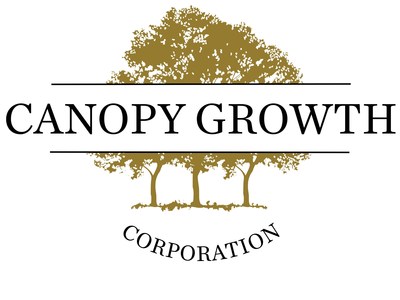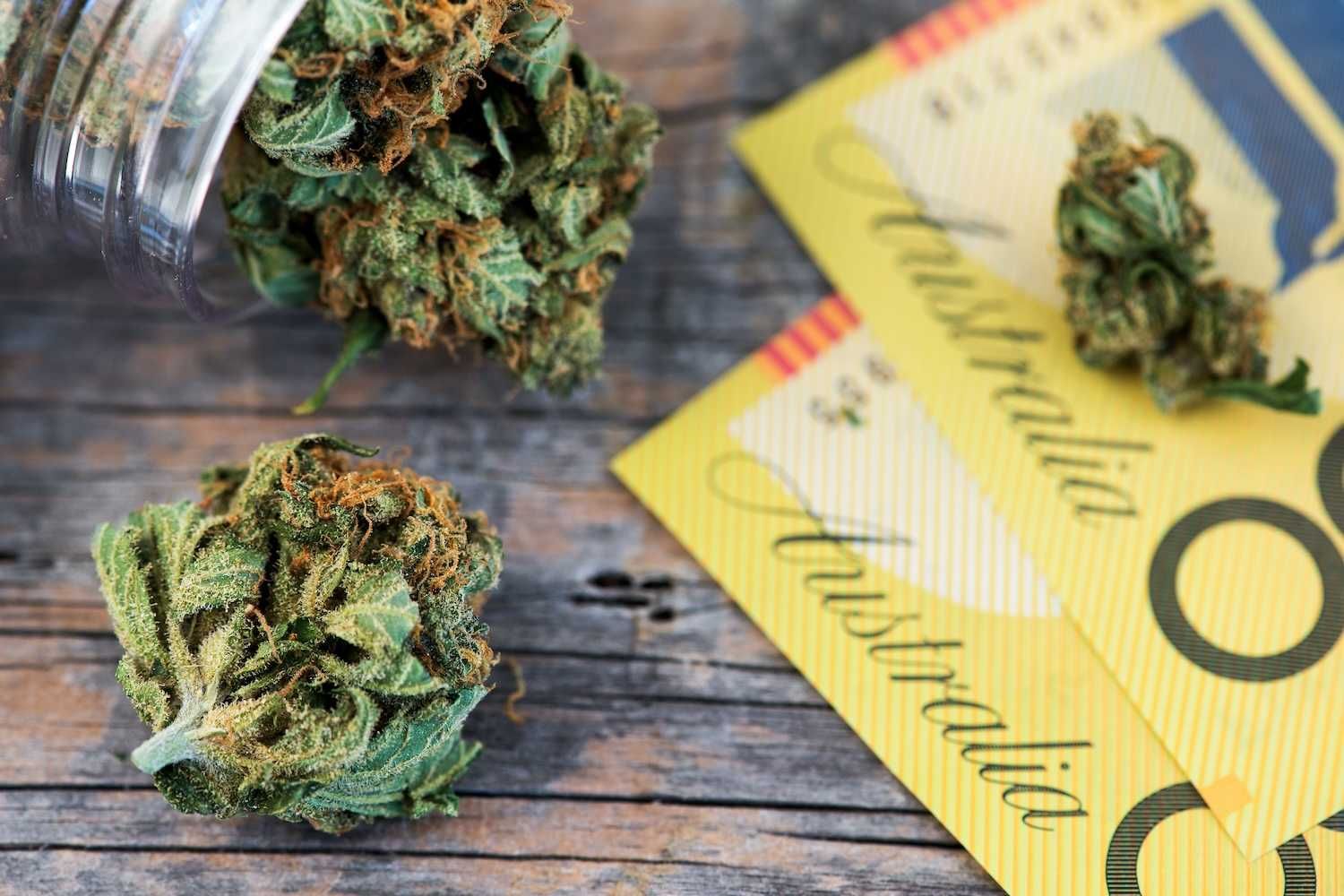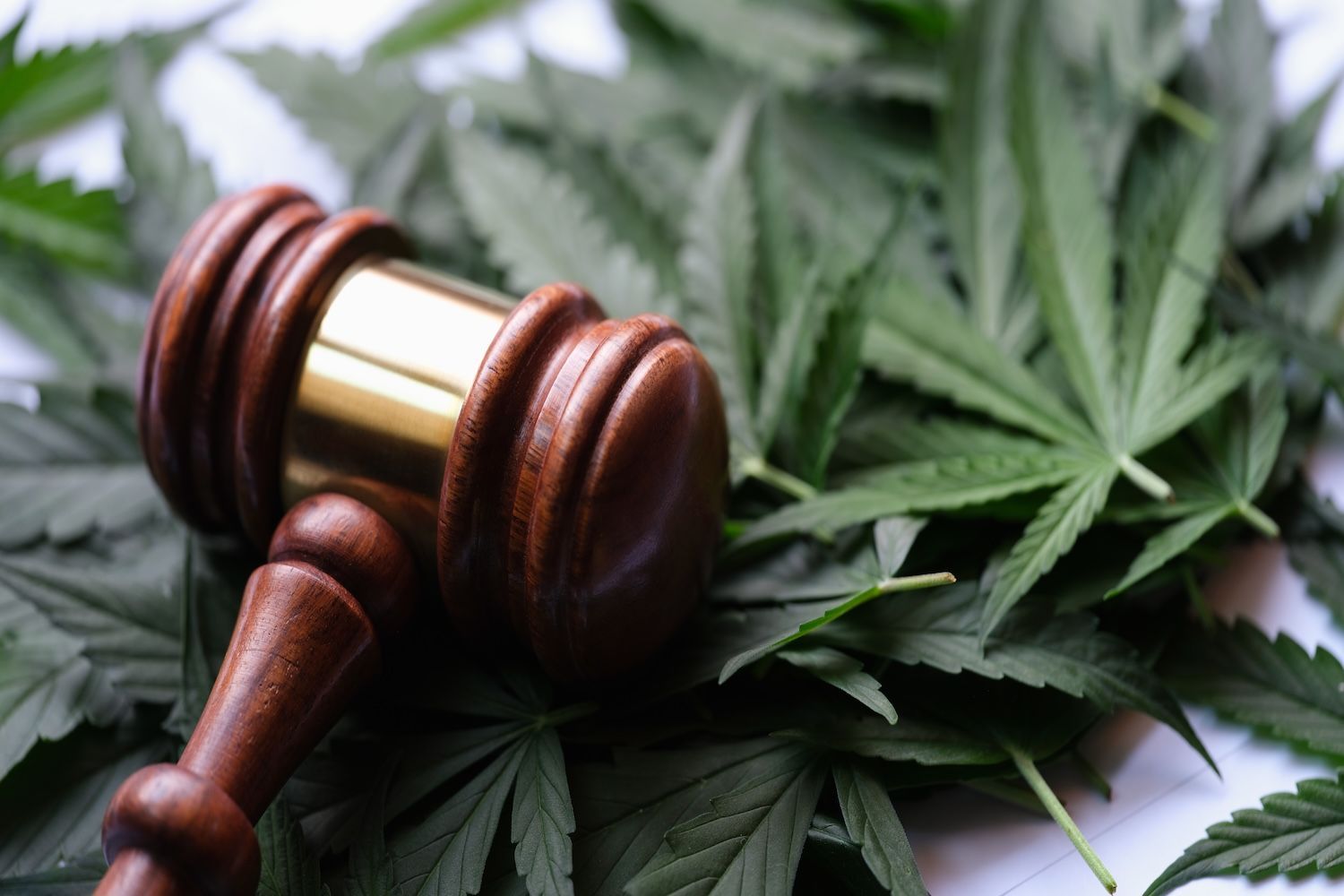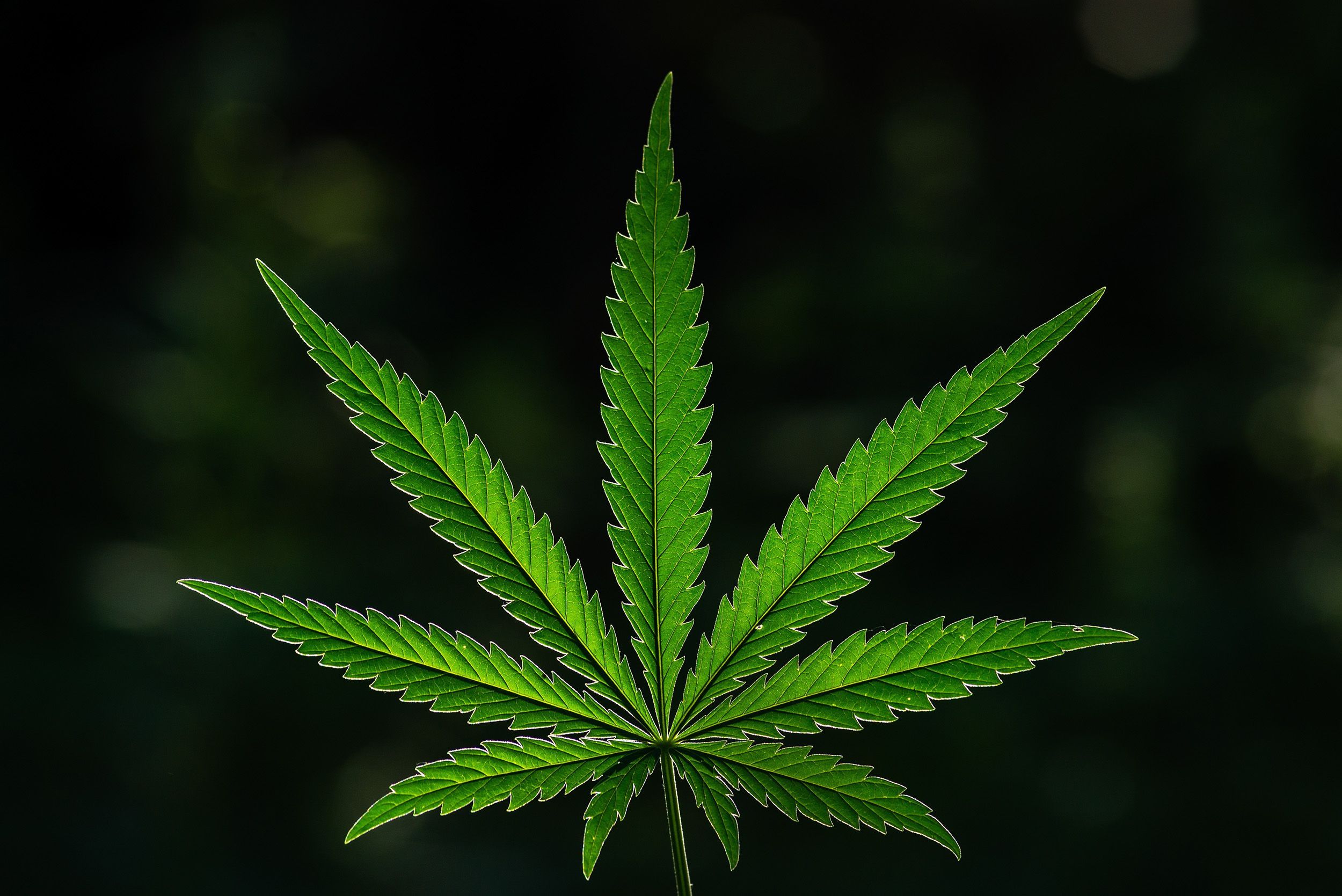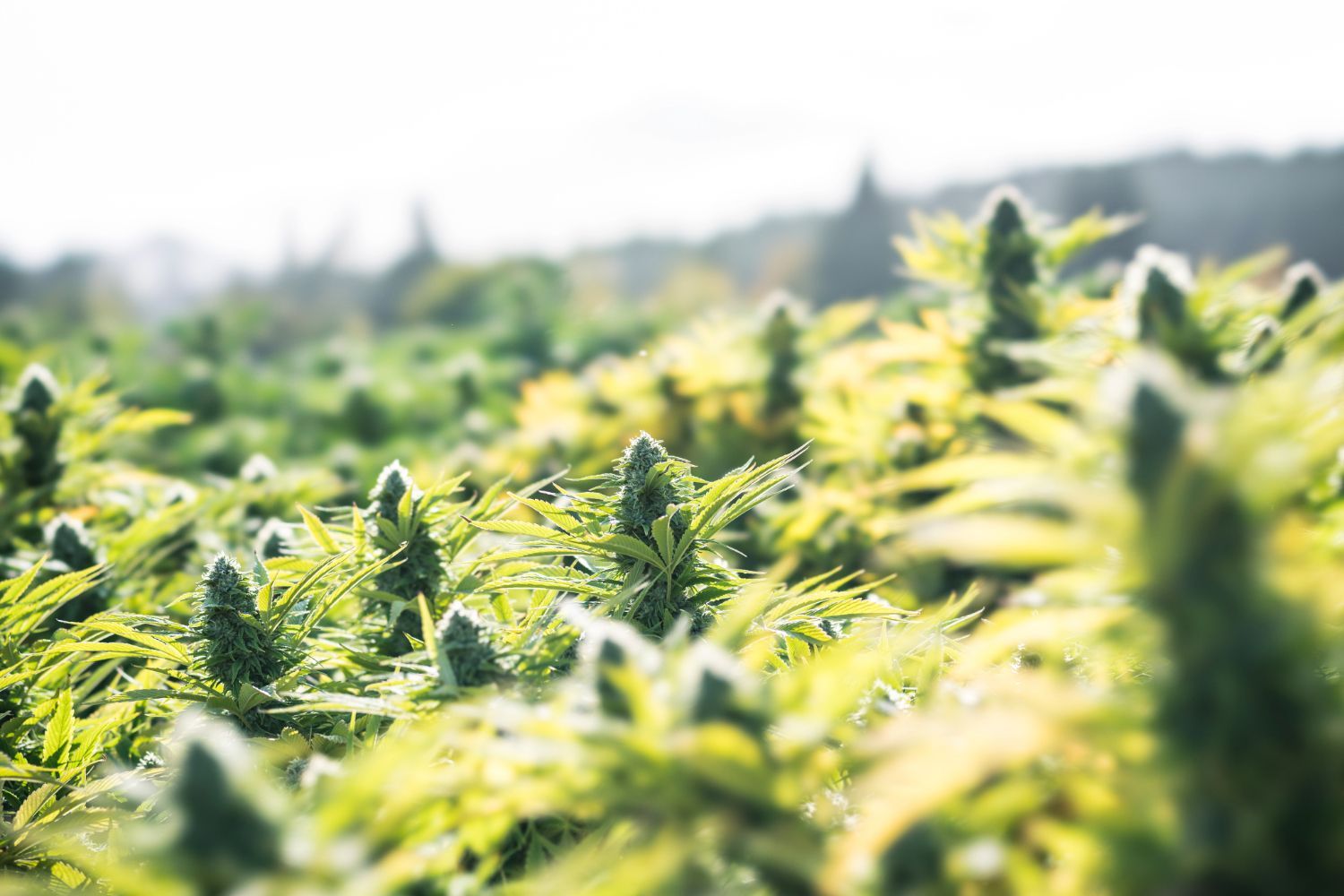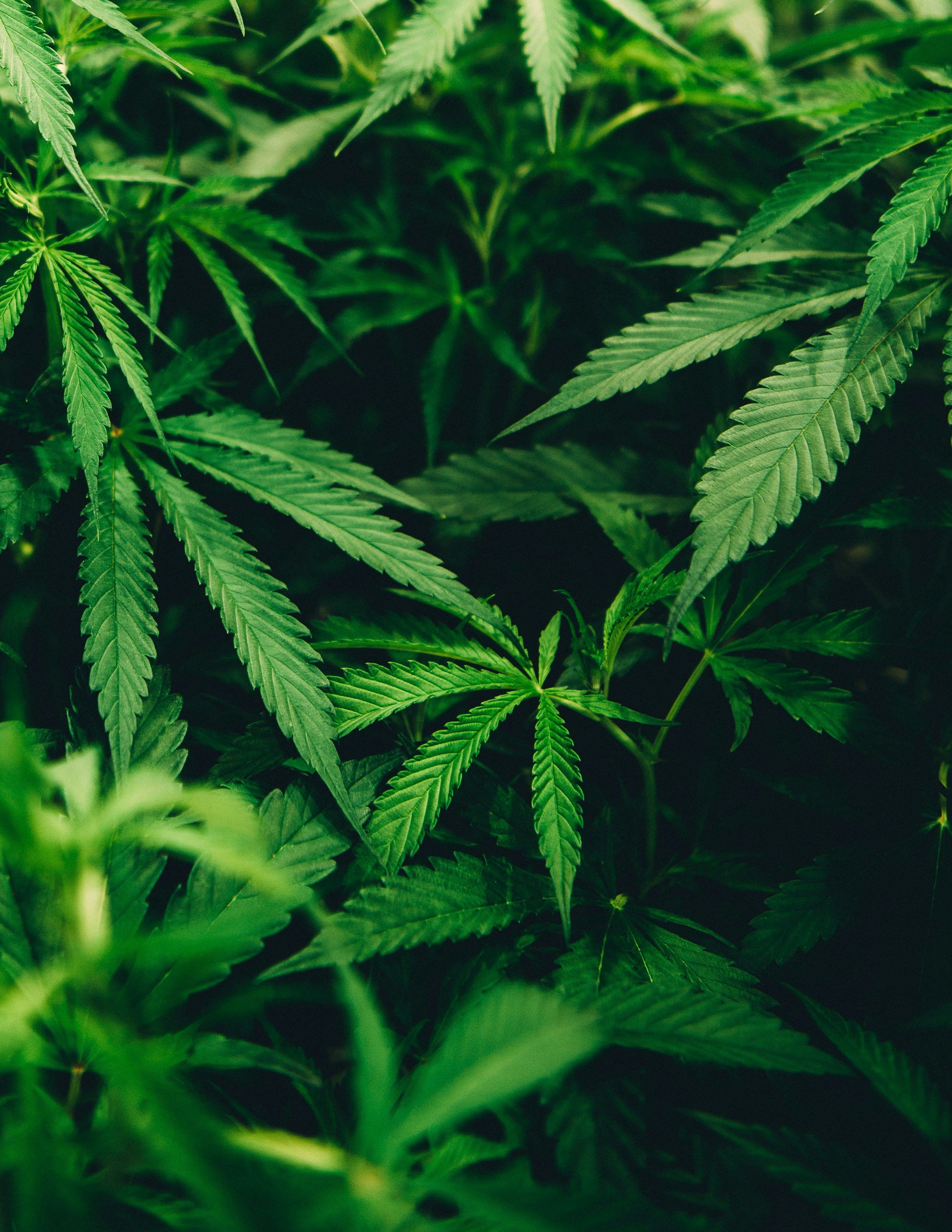Business transformation continues to gain traction
Improved commercial and operational execution drives record net revenue of $153 million , up 23% vs Q3 2020
Q3 2021 Canadian recreational market share increased by 30bps vs Q2 2021 based on our proprietary market share tracker
Provides medium-term financial targets, including expectations to achieve profitability during the second half of FY 2022, while continuing to invest behind consumer insights, R&D and the U.S. market
With renewed sense of optimism, Canopy further advanced the U.S. growth strategy ahead of potential cannabis reform
SMITHS FALLS, ON , Feb. 9, 2021 /PRNewswire/ - Canopy Growth Corporation ("Canopy Growth" or the "Company") (TSX: WEED) (NASDAQ: CGC) today announces its financial results for the third quarter fiscal 2021 ended December 31, 2020 . All financial information in this press release is reported in millions of Canadian dollars, unless otherwise indicated.
Third Quarter Fiscal 2021 Financial Summary
| | Net revenue | Gross margin | Adjusted | Net loss | Adjusted | Free cash |
| Reported | $152.5 | 16% | 26% | $(829.3) | $(68.4) | $(135.4) |
| vs. Q3 2020 | 23% | (1,500) bps | (500) bps | (656%) | 29% | 62% |
| 1 Adjusted gross margin percentage is a non-GAAP measure, and for Q3 2021 excludes restructuring costs included in cost of goods sold of $15.6 million. | ||||||
| 2 Adjusted EBITDA is a non-GAAP measure. See "Non-GAAP Measures". | ||||||
| 3 Free cash flow is a non-GAAP measure. See "Non-GAAP Measures". | ||||||
"We delivered another quarter of record net revenue, with growth across all our businesses, led by improved commercial and supply chain execution," said David Klein , CEO. "We are building a track record of winning in our core markets, while also accelerating our U.S. growth strategy with the momentum building behind the promising cannabis reform in the U.S."
"We are executing against our cost savings program, with several initiatives already completed and more underway to build a leaner and more agile business," added Mike Lee , CFO. "These cost savings, along with our top-line growth and continued cost discipline, puts Canopy firmly on a path to achieve profitability during Fiscal 2022, with further improvement anticipated beyond."
Medium-Term Financial Milestones
With our new strategy in place, our organizational changes complete, and our operational cost savings program now underway, the Company is in position to establish the following medium-term financial targets:
- Net revenue CAGR of 40%-50% from FY 2022 to FY 2024;
- Positive Adjusted EBITDA during the second half of FY 2022 and 20% Adjusted EBITDA margin for the full year FY 2024; and
- Positive operating cash flow for the full year FY 2023 and positive free cash flow for the full year FY 2024.
Key drivers underpinning the Company's financial targets include:
- The Canadian legal recreational cannabis market growth of 40% in FY 2022 and 25%-30% CAGR from FY 2022 to FY 2024;
- The Company's Canadian recreational cannabis sales growth expected to be driven by overall market growth and market share gains;
- The Company's Canadian medical cannabis sales growth expected to be driven by market share gains in a stable-to-declining Canada medical cannabis market;
- The Company's international medical cannabis growth expected to be driven by the growth in Germany medical market;
- Growth of the Company's U.S. CBD business, and consumer packaged goods (CPG) businesses, namely BioSteel, This Works and Storz & Bickel ("S&B"), expected to be driven by distribution expansion in the U.S. and new product launches;
- The Company's announced cost savings program of $150 - $200 million expected to be realized over the next 12-18 months; and
- The Company's Capital Expenditures (CapEx) expected to be below $200 million per year in FY 2021 and FY 2022.
Third Quarter Fiscal 2021 Corporate Financial Highlights
- Revenues : We achieved net revenue of $153 million in Q3 2021, an increase of 23% versus Q3 2020. Net cannabis revenue of $99 million was driven by an increase in Canadian recreational and International medical cannabis revenue. In addition, an increase in sales of S&B vaporizers, This Works health & wellness products, and BioSteel contributed to overall net revenue growth.
- Gross margin : Reported gross margin in Q3 2021 was 16%. Adjusted gross margin, excluding restructuring charges recorded in cost of goods sold, was 26% in Q3 2021, representing a decrease of 500 bps from Q3 2020. Adjusted gross margin was impacted by continued under absorption of fixed costs, which is expected to moderate driven by the announced cost savings program.
- Operating expenses : Total SG&A ("SG&A") expenses declined by 15% versus Q3 2020, driven by year-over-year reductions in Sales & Marketing, General & Administrative ("G&A") and Research and Development ("R&D") expenses. Sales & Marketing expense decline of 15% reflects lower advertising and marketing expenses versus last year's spending attributable to product marketing and brand awareness campaigns in support of our Cannabis 2.0 products, partially offset by higher sponsorship fees for BioSteel and increased brand spending in support of our U.S. CBD business. G&A expense decline of 23% was due primarily to a reduction in costs attributable to corporate restructuring actions taken earlier in the year. R&D expenses decreased by 33% also driven by lower compensations expenses resulting from corporate restructuring actions taken earlier in the year. Share-based Compensation expenses decreased 68% over Q3 2020.
- Net Loss : Net loss of $829 million , a $720 million wider loss versus Q3 2020, was driven primarily by impairment and restructuring charges and other related charges of $416 million , of which $382 million relates to our announcement on December 9, 2020 . Of the total impairment and restructuring charges recorded during Q3 2021, approximately 15% was a cash charge. Additionally, Other Expense totalled $291 million during Q3 2021 stemming from non-cash fair value changes, mostly driven by the Company's higher stock price.
- Adjusted EBITDA : Adjusted EBITDA loss was $68 million in Q3 2021, compared to a loss of $97 million in Q3 2020 driven by net revenue growth and a decline in operating expenses.
- Cash Position : Cash and Short-term Investments amounted to $1.59 billion at December 31, 2020 , representing a decrease of $0.39 billion from $1.98 billion at March 31, 2020 reflecting the EBITDA loss and capital investments.
Business & Operational Highlights
- Further strengthened competitive positioning in Canada recreational market
- Our Canadian recreational market share increased to 15.7% during Q3 2021, up 30bps versus Q2 2021. Notably, our market share grew by 60 bps in Alberta and 120 bps in British Columbia , while it declined by 80 bps in Ontario in Q3 2021 vs Q2 2021. Our market share in Ontario improved by 150 bps during the latest 4-weeks ended January 17, 2021 , vs Q3 2021.
- We grew our market share in the flower category by 180 bps during Q3 2021 vs. Q2 2021. Twd. continued to drive market share gains in the growing value flower segment, as our market share of value flower sold in Ontario increased by 310 bps to 16.8% in Q3 2021 from Q2 2021.
- Our beverages captured 34% market share in Q3, even as new beverage brands have entered the marketplace. Canopy beverages retained the top 3 brands and our beverage brands are commanding higher velocity versus competitive set on a per SKU basis.
- Built further momentum in the U.S. market driven by our CBD products and non-CBD brands
- Martha Stewart health and wellness CBD products are seeing strong consumer demand, with the brand already outselling over 94% of all CBD brands in the U.S. in just 4 months since launch. Canopy has secured distribution of Martha Stewart CBD collection in 580+ Vitamin Shoppe and Super Supplements retail locations nationwide.
- Subsequent to quarter end, the Company launched CBD pet products under the Martha Stewart CBD and SurityPro CBD brands.
- BioSteel has established a direct-store-delivery ("DSD") network with Constellation Brands' beer distributors with the products starting to hit shelves in independent retailers in the U.S. market. BioSteel has secured agreements with several large key chain accounts across convenience & gas and food/drug/mass channels.
- S&B vaporizer products continued to see strong growth driven by strengthened distribution and strong consumer pull.
- This Works strengthened direct (TW.com, shopcanopy.com) and third-party ecommerce sales channels.
- Further streamlined operations and improved organizational focus
- Ceased operations at a number of production facilities in Canada as part of the end-to-end review of our operations aimed at optimizing the Company's footprint.
- Entered into an arrangement with Canopy Rivers Inc. ("Canopy Rivers") (TSX: RIV) and its wholly-owned subsidiary Canopy Rivers Corporation ("CRC") that will divest Canopy Growth's interest in Canopy Rivers, increase the Company's direct conditional ownership of U.S. MSO TerrAscend Corp. and increase Canopy Growth's ownership of Vert Mirabel greenhouse. As additional consideration for the assets being transferred and the termination of the royalty agreement, Canopy Growth will make a cash payment to CRC of $115 million and issue an aggregate of 3,750,000 commons shares to CRC. The Plan of Arrangement is subject to approval by shareholders of Canopy Rivers Inc. at a special shareholder meeting that is expected to be held on February 16, 2021 , and applicable approvals by the Ontario Superior Court of Justice and certain other closing conditions.
Third Quarter Fiscal 2021 Financial and Operational Review
Revenue by Channel
| (in millions of Canadian dollars, unaudited) | Q3 2021 | Q3 2020 | vs. Q3 2020 |
| | | | |
| Canadian recreational net revenue | | | |
| - Business to business 1 | $43.1 | $43.0 | NM |
| - Business to consumer | $20.2 | $15.2 | 33% |
| | $63.3 | $58.2 | 9% |
| Canadian medical net revenue 2 | $14.0 | $13.5 | 4% |
| International medical revenue | $21.5 | $18.7 | 15% |
| | $35.5 | $32.2 | 10% |
| Cannabis net revenue | $98.8 | $90.4 | 9% |
| | | | |
| All other revenue | $53.7 | $33.4 | 61% |
| Net revenue | $152.5 | $123.8 | 23% |
| 1 Reflects excise taxes of $16.0 million and other revenue adjustments of $3.8 million for Q3 2021 (Q3 2020 - $10.5 million and $5.3 million, respectively). | |||
| 2 Reflects excise taxes of $1.4 million in Q3 2021 (Q3 2020 - $1.3 million). | |||
Revenue by Form
| (in millions of Canadian dollars, unaudited) | Q3 2021 | Q3 2020 | vs. Q3 2020 |
| | | | |
| Canadian recreational net revenue | | | |
| - Dry bud 1 | $66.2 | $69.3 | (4%) |
| - Oils and softgels 1 | $7.3 | $4.7 | 55% |
| - Cannabis 2.0 products 2 | $9.6 | $- | NM |
| - Other revenue adjustments 3 | $(3.8) | $(5.3) | 28% |
| - Excise taxes | $(16.0) | $(10.5) | (52%) |
| | $63.3 | $58.2 | 9% |
| Global medical net revenue | | | |
| - Dry bud | $9.0 | $9.2 | (2%) |
| - Oils and softgels | $27.0 | $24.3 | 11% |
| - Cannabis 2.0 products 2 | $0.9 | $- | NM |
| - Excise taxes | $(1.4) | $(1.3) | (8%) |
| | $35.5 | $32.2 | 10% |
| Cannabis net revenue | $98.8 | $90.4 | 9% |
| | | | |
| All other revenue | $53.7 | $33.4 | 61% |
| Net revenue | $152.5 | $123.8 | 23% |
| 1 Excludes the impact of other revenue adjustments. | |||
| 2 Cannabis 2.0 products include cannabis-infused chocolates, cannabis-infused beverages, and cannabis vape products (including power sources such as rechargeable and compact batteries, ready-to-go vape pens, and cartridges/vape pods). | |||
| 3 Other revenue adjustments represent the Company's determination of returns and pricing adjustments, and relate to the Canadian recreational business-to-business channel. | |||
Canadian Cannabis
- Recreational B2B net sales were flat versus Q3 2020, as higher volume from our flower products and increased contribution from Cannabis 2.0 product were offset by a negative mix shift to value flower products. Recreational B2B net sales increased by 2% compared to Q2 2021 driven by store openings across Canada and improved market share performance.
- Recreational B2C net sales increased 33% versus Q3 2020 due primarily to an increase in number of corporate stores as well as both Cannabis 1.0 products (dried flower, oils and soft gels) and Cannabis 2.0 products driving higher average basket size. Recreational B2C net sales increased 8% versus Q2 2021 due to a full quarter of sales from ten new stores in Alberta , and same store sales growth of 4% over Q2 2021 resulting from seasonal sales and promotional programs.
- Canadian medical net revenue increased 4% from Q3 2020 driven primarily by a higher number of orders in Q3 2021.
International Cannabis
- C3 revenue in Q3 2021 increased 19% over Q3 2020 in part due to market growth. C3 revenue in Q3 2021 increased 30% over Q2 2021 due to the resolution of a packaging issue with a distributor that limited sales in Q2 2021.
- Dried flower sales in Germany declined 2% in Q3 2021 over Q3 2020 due to supply challenges and slower market growth in part driven by COVID 19 restrictions.
Strategic Businesses
- S&B vaporizer revenue in Q3 2021 increased 53% over Q3 2020, benefiting from strengthened distribution in the U.S., a strong consumer demand, a broader product portfolio and strong seasonal sales.
- This Works sales in Q3 2021 increased 32% over Q3 2020, benefitting from strong organic growth driven by e-commerce sales and sales of the Stress Check hand sanitizer launched in the UK and U.S. during fiscal 2021.
- BioSteel sales increased due primarily to expanded distribution in the U.S. that drove strong organic growth. Over half of BioSteel's sales during the period came from the U.S. market.
The third quarter fiscal 2021 and third quarter fiscal 2020 financial results presented in this press release have been prepared in accordance with U.S. GAAP.
| Note: | |
| i) | Calculated using internal proprietary market share tool that utilizes point of sales data supplied by a third-party data provider, government agencies and our own retail store operations across the country. Tool captures point of sale data from an average of 39% of stores in Alberta, British Columbia, Saskatchewan, Manitoba and Newfoundland & Labrador, point of sale data from 100% of stores in New Brunswick, Nova Scotia and Prince Edward Island, as well as depletions and ecommerce sales data from the OCS. |
Webcast and Conference Call Information
The Company will host a conference call and audio webcast with David Klein , CEO and Mike Lee , CFO at 10:00 AM Eastern Time on February 9, 2021 .
Webcast Information
A live audio webcast will be available at:
https://produceredition.webcasts.com/starthere.jsp?ei=1418491&tp_key=44498b6183
Replay Information
A replay will be accessible by webcast until 11:59 PM ET on May 10, 2021 at:
https://produceredition.webcasts.com/starthere.jsp?ei=1418491&tp_key=44498b6183
Non-GAAP Measures
Adjusted EBITDA is a non-GAAP measure used by management that is not defined by U.S. GAAP and may not be comparable to similar measures presented by other companies. Adjusted EBITDA is calculated as the reported net loss, adjusted to exclude income tax recovery (expense); other income (expense), net; loss on equity method investments; share-based compensation expense; depreciation and amortization expense; asset impairment and restructuring costs; expected credit losses on financial assets and related charges; restructuring costs recorded in cost of goods sold; and charges related to the flow-through of inventory step-up on business combinations, and further adjusted to remove acquisition-related costs. The Adjusted EBITDA reconciliation is presented within this news release and explained in the Company's Quarterly Report on Form 10-Q to be filed with the SEC.
Free Cash Flow is a non-GAAP measure used by management that is not defined by U.S. GAAP and may not be comparable to similar measures presented by other companies. This measure is calculated as net cash provided by (used in) operating activities less purchases of and deposits on property, plant and equipment. The Free Cash Flow reconciliation is presented within this news release and explained in the Company's Quarterly Report on Form 10-Q to be filed with the SEC.
Adjusted Gross Margin and Adjusted Gross Margin Percentage are non-GAAP measures used by management that are not defined by U.S. GAAP and may not be comparable to similar measures presented by other companies. Adjusted Gross Margin is calculated as gross margin excluding restructuring costs recorded in cost of goods sold. Adjusted Gross Margin Percentage is calculated as Adjusted Gross Margin divided by net revenue. The Adjusted Gross Margin and Adjusted Gross Margin Percentage reconciliation is presented within this news release.
About Canopy Growth Corporation
Canopy Growth (TSX:WEED, NASDAQ:CGC) is a world-leading diversified cannabis and cannabinoid-based consumer product company, driven by a passion to improve lives, end prohibition, and strengthen communities by unleashing the full potential of cannabis. Leveraging consumer insights and innovation, we offer product varieties in high quality dried flower, oil, softgel capsule, infused beverage, edible, and topical formats, as well as vaporizer devices by Canopy Growth and industry-leader Storz & Bickel. Our global medical brand, Spectrum Therapeutics, sells a range of full-spectrum products using its colour-coded classification system and is a market leader in both Canada and Germany . Through our award-winning Tweed and Tokyo Smoke banners, we reach our adult-use consumers and have built a loyal following by focusing on top quality products and meaningful customer relationships. Canopy Growth has entered into the health and wellness consumer space in key markets including Canada , the United States , and Europe through BioSteel sports nutrition, and This Works skin and sleep solutions; and has introduced additional federally-permissible CBD products to the United States through our First & Free and Martha Stewart CBD brands. Canopy Growth has an established partnership with Fortune 500 alcohol leader Constellation Brands. For more information visit www.canopygrowth.com .
Notice Regarding Forward Looking Statements
This press release contains "forward-looking statements" within the meaning of applicable securities laws, which involve certain known and unknown risks and uncertainties. Forward-looking statements predict or describe our future operations, business plans, business and investment strategies and the performance of our investments. These forward-looking statements are generally identified by their use of such terms and phrases as "intend," "goal," "strategy," "estimate," "expect," "project," "projections," "forecasts," "plans," "seeks," "anticipates," "potential," "proposed," "will," "should," "could," "would," "may," "likely," "designed to," "foreseeable future," "believe," "scheduled" and other similar expressions. Our actual results or outcomes may differ materially from those anticipated. You are cautioned not to place undue reliance on these forward-looking statements, which speak only as of the date the statement was made.
Forward-looking statements include, but are not limited to, statements with respect to:
- the uncertainties associated with the COVID-19 pandemic, including our ability to continue operations, the ability of our suppliers and distribution channels to continue to operate, and the use of our products by consumers, and disruptions to the global and local economies due to related stay-at-home orders, quarantine policies and restrictions on travel, trade and business operations and a reduction in discretionary consumer spending;
- laws and regulations and any amendments thereto applicable to our business and the impact thereof, including uncertainty regarding the application of U.S. state and federal law to U.S. hemp (including CBD) products and the scope of any regulations by the U.S. Federal Drug Administration, the U.S. Federal Trade Commission, the U.S. Patent and Trademark Office, the U.S. Department of Agriculture (the "USDA") and any state equivalent regulatory agencies over U.S. hemp (including CBD) products;
- expectations regarding the regulation of the U.S. hemp industry in the U.S., including the promulgation of regulations for the U.S. hemp industry by the USDA;
- expectations regarding the potential success of, and the costs and benefits associated with, our acquisitions, dispositions, joint ventures, strategic alliances and equity investments;
- the amended plan of arrangement with Acreage Holdings, Inc, including the consummation of such acquisition;
- the plan of arrangement with Canopy Rivers Inc., including the satisfaction or waiver of the conditions to closing of such transaction;
- the grant, renewal and impact of any license or supplemental license to conduct activities with cannabis or any amendments thereof;
- our international activities and joint venture interests, including required regulatory approvals and licensing, anticipated costs and timing, and expected impact;
- the ability to successfully create and launch brands and further create, launch and scale cannabis-based products and U.S. hemp-derived consumer products in jurisdictions where such products are legal and that we currently operate in;
- the benefits, viability, safety, efficacy, dosing and social acceptance of cannabis, including CBD and other cannabinoids;
- the anticipated benefits and impact of the investments in us (the "CBI Group Investments") by Constellation Brands, Inc. and its affiliates (together, the "CBI Group");
- the potential exercise of the warrants held by the CBI Group, pre-emptive rights and/or top-up rights in connection with the CBI Group Investments, including proceeds to us that may result therefrom or the potential conversion of notes held by the CBI Group in connection with the CBI Group Investments;
- expectations regarding the use of proceeds of equity financings, including the proceeds from the CBI Group Investments;
- the legalization of the use of cannabis for medical or recreational in jurisdictions outside of Canada , the related timing and impact thereof and our intentions to participate in such markets, if and when such use is legalized;
- our ability to execute on our strategy and the anticipated benefits of such strategy;
- the ongoing impact of the legalization of additional cannabis product types and forms for recreational use in Canada , including federal, provincial, territorial and municipal regulations pertaining thereto, the related timing and impact thereof and our intentions to participate in such markets;
- the ongoing impact of developing provincial, territorial and municipal regulations pertaining to the sale and distribution of cannabis, the related timing and impact thereof, as well as the restrictions on federally regulated cannabis producers participating in certain retail markets and our intentions to participate in such markets to the extent permissible;
- the future performance of our business and operations;
- our competitive advantages and business strategies;
- the competitive conditions of the industry;
- the expected growth in the number of customers using our products;
- our ability or plans to identify, develop, commercialize or expand our technology and research and development initiatives in cannabinoids, or the success thereof;
- expectations regarding revenues, expenses and anticipated cash needs;
- expectations regarding cash flow, liquidity and sources of funding;
- expectations regarding capital expenditures;
- the expansion of our production and manufacturing, the costs and timing associated therewith and the receipt of applicable production and sale licenses;
- the expected growth in our growing, production and supply chain capacities;
- expectations regarding the resolution of litigation and other legal proceedings;
- expectations with respect to future production costs;
- expectations with respect to future sales and distribution channels;
- the expected methods to be used to distribute and sell our products;
- our future product offerings;
- the anticipated future gross margins of our operations;
- accounting standards and estimates;
- expectations regarding our distribution network; and
- expectations regarding the costs and benefits associated with our contracts and agreements with third parties, including under our third-party supply and manufacturing agreements.
Certain of the forward-looking statements contained herein concerning the industries in which we conduct our business are based on estimates prepared by us using data from publicly available governmental sources, market research, industry analysis and on assumptions based on data and knowledge of these industries, which we believe to be reasonable. However, although generally indicative of relative market positions, market shares and performance characteristics, such data is inherently imprecise. The industries in which we conduct our business involve risks and uncertainties that are subject to change based on various factors, which are described further below.
The forward-looking statements contained herein are based upon certain material assumptions that were applied in drawing a conclusion or making a forecast or projection, including: (i) management's perceptions of historical trends, current conditions and expected future developments; (ii) our ability to generate cash flow from operations; (iii) general economic, financial market, regulatory and political conditions in which we operate; (iv) the production and manufacturing capabilities and output from our facilities and our joint ventures, strategic alliances and equity investments; (v) consumer interest in our products; (vi) competition; (vii) anticipated and unanticipated costs; (viii) government regulation of our activities and products including but not limited to the areas of taxation and environmental protection; (ix) the timely receipt of any required regulatory authorizations, approvals, consents, permits and/or licenses; * our ability to obtain qualified staff, equipment and services in a timely and cost-efficient manner; (xi) our ability to conduct operations in a safe, efficient and effective manner; (xii) our ability to realize anticipated benefits, synergies or generate revenue, profits or value from our recent acquisitions into our existing operations; (xiii) our ability to continue to operate in light of the COVID-19 pandemic and the impact of the pandemic on demand for, and sales of, our products and our distribution channels; and (xiv) other considerations that management believes to be appropriate in the circumstances. While our management considers these assumptions to be reasonable based on information currently available to management, there is no assurance that such expectations will prove to be correct.
By their nature, forward-looking statements are subject to inherent risks and uncertainties that may be general or specific and which give rise to the possibility that expectations, forecasts, predictions, projections or conclusions will not prove to be accurate, that assumptions may not be correct and that objectives, strategic goals and priorities will not be achieved. A variety of factors, including known and unknown risks, many of which are beyond our control, could cause actual results to differ materially from the forward-looking statements in this press release and other reports we file with, or furnish to, the Securities and Exchange Commission (the "SEC") and other regulatory agencies and made by our directors, officers, other employees and other persons authorized to speak on our behalf. Such factors include, without limitation, the risk that the COVID-19 pandemic may disrupt our operations and those of our suppliers and distribution channels and negatively impact the use of our products; consumer demand for cannabis and U.S. hemp products; that cost savings and any other synergies from the CBI Group Investments may not be fully realized or may take longer to realize than expected; future levels of revenues; our ability to manage disruptions in credit markets or changes to our credit rating; future levels of capital, environmental or maintenance expenditures, general and administrative and other expenses; the success or timing of completion of ongoing or anticipated capital or maintenance projects; business strategies, growth opportunities and expected investment; the adequacy of our capital resources and liquidity, including but not limited to, availability of sufficient cash flow to execute our business plan (either within the expected timeframe or at all); the potential effects of judicial or other proceedings on our business, financial condition, results of operations and cash flows; volatility in and/or degradation of general economic, market, industry or business conditions; compliance with applicable environmental, economic, health and safety, energy and other policies and regulations and in particular health concerns with respect to vaping and the use of cannabis and U.S. hemp products in vaping devices; the anticipated effects of actions of third parties such as competitors, activist investors or federal, state, provincial, territorial or local regulatory authorities, self-regulatory organizations, plaintiffs in litigation or persons threatening litigation; changes in regulatory requirements in relation to our business and products; and the factors discussed under the heading "Risk Factors" in the Company's Annual Report on Form 10-K for the year ended March 31, 2020 filed with the SEC on June 1, 2020 . Readers are cautioned to consider these and other factors, uncertainties and potential events carefully and not to put undue reliance on forward-looking statements.
Forward-looking statements are provided for the purposes of assisting the reader in understanding our financial performance, financial position and cash flows as of and for periods ended on certain dates and to present information about management's current expectations and plans relating to the future, and the reader is cautioned that the forward-looking statements may not be appropriate for any other purpose. While we believe that the assumptions and expectations reflected in the forward-looking statements are reasonable based on information currently available to management, there is no assurance that such assumptions and expectations will prove to have been correct. Forward-looking statements are made as of the date they are made and are based on the beliefs, estimates, expectations and opinions of management on that date. We undertake no obligation to update or revise any forward-looking statements, whether as a result of new information, estimates or opinions, future events or results or otherwise or to explain any material difference between subsequent actual events and such forward-looking statements, except as required by law. The forward-looking statements contained in this press release and other reports we file with, or furnish to, the SEC and other regulatory agencies and made by our directors, officers, other employees and other persons authorized to speak on our behalf are expressly qualified in their entirety by these cautionary statements.
| CANOPY GROWTH CORPORATION CONDENSED INTERIM CONSOLIDATED BALANCE SHEETS (in thousands of Canadian dollars, except number of shares and per share data, unaudited) | ||||
| | | | | |
| | December 31, 2020 | | March 31, 2020 | |
| ASSETS | ||||
| Current assets: | | | | |
| Cash and cash equivalents | $824,960 | | $1,303,176 | |
| Short-term investments | 768,564 | | 673,323 | |
| Restricted short-term investments | 11,426 | | 21,539 | |
| Amounts receivable, net | 93,673 | | 90,155 | |
| Inventory | 394,023 | | 391,086 | |
| Prepaid expenses and other assets | 78,979 | | 85,094 | |
| Total current assets | 2,171,625 | | 2,564,373 | |
| Equity method investments | 16,992 | | 65,843 | |
| Other financial assets | 682,595 | | 249,253 | |
| Property, plant and equipment | 1,148,338 | | 1,524,803 | |
| Intangible assets | 366,375 | | 476,366 | |
| Goodwill | 1,917,900 | | 1,954,471 | |
| Other assets | 5,357 | | 22,636 | |
| Total assets | $6,309,182 | | $6,857,745 | |
| | | | | |
| LIABILITIES AND SHAREHOLDERS' EQUITY | ||||
| Current liabilities: | | | | |
| Accounts payable | $86,463 | | $123,393 | |
| Other accrued expenses and liabilities | 88,419 | | 64,994 | |
| Current portion of long-term debt | 13,031 | | 16,393 | |
| Other liabilities | 160,306 | | 215,809 | |
| Total current liabilities | 348,219 | | 420,589 | |
| Long-term debt | 619,165 | | 449,022 | |
| Deferred income tax liabilities | 23,251 | | 47,113 | |
| Liability arising from Acreage Arrangement | 450,000 | | 250,000 | |
| Warrant derivative liability | 415,946 | | 322,491 | |
| Other liabilities | 157,079 | | 190,660 | |
| Total liabilities | 2,013,660 | | 1,679,875 | |
| Commitments and contingencies | | | | |
| Redeemable noncontrolling interest | 111,100 | | 69,750 | |
| Canopy Growth Corporation shareholders' equity: | | | | |
| Common shares - $nil par value; Authorized - unlimited number of shares; | | | | |
| Issued - 373,803,786 shares and 350,112,927 shares, respectively | 6,787,725 | | 6,373,544 | |
| Additional paid-in capital | 2,509,678 | | 2,615,155 | |
| Accumulated other comprehensive income | 27,407 | | 220,899 | |
| Deficit | (5,368,178) | | (4,323,236) | |
| Total Canopy Growth Corporation shareholders' equity | 3,956,632 | | 4,886,362 | |
| Noncontrolling interests | 227,790 | | 221,758 | |
| Total shareholders' equity | 4,184,422 | | 5,108,120 | |
| Total liabilities and shareholders' equity | $6,309,182 | | $6,857,745 | |
| CANOPY GROWTH CORPORATION CONDENSED INTERIM CONSOLIDATED STATEMENTS OF OPERATIONS (in thousands of Canadian dollars, except number of shares and per share data, unaudited) | |||||||
| | | | | | | | |
| | Three months ended December 31, | | Nine months ended December 31, | ||||
| | 2020 | | 2019 | | 2020 | | 2019 |
| Revenue | $169,907 | | $135,546 | | $439,823 | | $324,558 |
| Excise taxes | 17,379 | | 11,782 | | 41,613 | | 33,699 |
| Net revenue | 152,528 | | 123,764 | | 398,210 | | 290,859 |
| Cost of goods sold | 127,943 | | 85,556 | | 341,050 | | 230,718 |
| Gross margin | 24,585 | | 38,208 | | 57,160 | | 60,141 |
| Operating expenses: | | | | | | | |
| Selling, general and administrative expenses | 144,078 | | 168,910 | | 426,723 | | 496,158 |
| Share-based compensation | 19,963 | | 61,679 | | 72,632 | | 241,922 |
| Expected credit losses on financial assets | | | | | | | |
| and related charges | 13,735 | | - | | 108,480 | | - |
| Asset impairment and restructuring costs | 400,422 | | - | | 459,579 | | - |
| Total operating expenses | 578,198 | | 230,589 | | 1,067,414 | | 738,080 |
| Operating loss | (553,613) | | (192,381) | | (1,010,254) | | (677,939) |
| Loss from equity method investments | (671) | | (2,664) | | (40,851) | | (6,668) |
| Other income (expense), net | (290,567) | | 57,963 | | (21,106) | | 600,624 |
| Loss before income taxes | (844,851) | | (137,082) | | (1,072,211) | | (83,983) |
| Income tax recovery | 15,600 | | 27,448 | | 18,086 | | 22,948 |
| Net loss | (829,251) | | (109,634) | | (1,054,125) | | (61,035) |
| Net income (loss) attributable to | | | | | | | |
| noncontrolling interests and redeemable | | | | | | | |
| noncontrolling interest | 75,129 | | (18,280) | | (9,183) | | (42,730) |
| Net loss attributable to Canopy Growth | | | | | | | |
| Corporation | $(904,380) | | $(91,354) | | $(1,044,942) | | $(18,305) |
| | | | | | | | |
| Basic and diluted loss per share | $(2.43) | | $(0.26) | | $(2.83) | | $(0.05) |
| Basic and diluted weighted average common | | | | | | | |
| shares outstanding | 372,908,767 | | 348,530,622 | | 369,418,037 | | 346,877,660 |
| CANOPY GROWTH CORPORATION CONDENSED INTERIM CONSOLIDATED STATEMENTS OF CASH FLOWS (in thousands of Canadian dollars, unaudited) | |||
| | | | |
| | Nine months ended December 31, | ||
| | 2020 | | 2019 |
| Cash flows from operating activities: | | | |
| Net loss | $(1,054,125) | | $(61,035) |
| Adjustments to reconcile net loss to net cash used in operating activities: | | | |
| Depreciation of property, plant and equipment | 54,625 | | 49,582 |
| Amortization of intangible assets | 43,565 | | 26,650 |
| Share of loss on equity method investments | 40,851 | | 6,668 |
| Share-based compensation | 72,632 | | 241,922 |
| Asset impairment and restructuring costs | 459,579 | | - |
| Expected credit losses on financial assets and related charges | 108,480 | | - |
| Income tax recovery | (18,086) | | (22,948) |
| Non-cash foreign currency | (11,046) | | (3,945) |
| Interest paid | (12,886) | | (13,738) |
| Change in operating assets and liabilities, net of effects from purchases | | | |
| of businesses: | | | |
| Amounts receivable | (12,507) | | 13,749 |
| Prepaid expenses and other assets | (4,353) | | (6,214) |
| Inventory | (28,520) | | (240,555) |
| Accounts payable and accrued liabilities | (8,243) | | (11,559) |
| Other, including non-cash fair value adjustments | 2,135 | | (540,573) |
| Net cash used in operating activities | (367,899) | | (561,996) |
| Cash flows from investing activities: | | | |
| Purchases of and deposits on property, plant and equipment | (137,977) | | (610,858) |
| Purchases of intangible assets | (7,238) | | (13,724) |
| Proceeds on sale of property, plant and equipment | 30,921 | | - |
| Proceeds on sale of intangible assets | 18,337 | | - |
| (Purchases) redemption of short-term investments | (83,612) | | 1,324,682 |
| Sale of (investments in) equity method investments | 7,000 | | (4,719) |
| Investments in other financial assets | (34,236) | | (46,647) |
| Investment in Acreage Arrangement | (49,849) | | (395,190) |
| Loan advanced to Acreage Hempco | (66,995) | | - |
| Recovery of amounts related to construction financing | 10,000 | | - |
| Payment of acquisition related liabilities | (15,144) | | (29,837) |
| Net cash outflow on acquisition of noncontrolling interests | (125) | | - |
| Net cash outflow on acquisition of subsidiaries | - | | (505,156) |
| Net cash used in investing activities | (328,918) | | (281,449) |
| Cash flows from financing activities: | | | |
| Payment of share issue costs | (670) | | (245) |
| Proceeds from issuance of shares by Canopy Rivers | 92 | | 1,062 |
| Proceeds from exercise of stock options | 37,999 | | 39,149 |
| Proceeds from exercise of warrants | 244,990 | | 446 |
| Issuance of long-term debt | - | | 10,268 |
| Repayment of long-term debt | (13,271) | | (122,036) |
| Net cash provided by (used in) financing activities | 269,140 | | (71,356) |
| Effect of exchange rate changes on cash and cash equivalents | (50,539) | | (4,365) |
| Net decrease in cash and cash equivalents | (478,216) | | (919,166) |
| Cash and cash equivalents, beginning of period | 1,303,176 | | 2,480,830 |
| Cash and cash equivalents, end of period | $824,960 | | $1,561,664 |
| Adjusted Gross Margin 1 Reconciliation (Non-GAAP Measure) | ||||
| | Three months ended December 31, | |||
| (in thousands of Canadian dollars, unaudited) | 2020 | | 2019 | |
| Net revenue | $152,528 | | $123,764 | |
| | | | | |
| Gross margin, as reported | 24,585 | | 38,208 | |
| Adjustments to gross margin: | | | | |
| Restructuring costs recorded in cost of goods sold | 15,637 | | - | |
| Adjusted gross margin 1 | $40,222 | | $38,208 | |
| | | | | |
| Adjusted gross margin percentage 1 | 26% | | 31% | |
| | | | | |
| 1 Adjusted gross margin and adjusted gross margin percentage are non-GAAP measures. See "Non-GAAP Measures". | ||||
| Adjusted EBITDA 1 Reconciliation (Non-GAAP Measure) | |||
| | Three months ended December 31, | ||
| (in thousands of Canadian dollars, unaudited) | 2020 | | 2019 |
| Net loss | $(829,251) | | $(109,634) |
| Income tax recovery | (15,600) | | (27,448) |
| Other (income) expense, net | 290,567 | | (57,963) |
| Loss on equity method investments | 671 | | 2,664 |
| Share-based compensation 2 | 19,963 | | 61,679 |
| Acquisition-related costs | 3,095 | | 3,256 |
| Depreciation and amortization 2 | 32,385 | | 30,464 |
| Asset impairment and restructuring costs | 400,422 | | - |
| Expected credit losses on financial assets | | | |
| and related charges | 13,735 | | - |
| Restructuring costs recorded in cost of goods sold | 15,637 | | - |
| Adjusted EBITDA 1 | $(68,376) | | $(96,982) |
| | | | |
| 1 Adjusted EBITDA is a non-GAAP measure. See "Non-GAAP Measures". | |||
| 2 From Condensed Interim Consolidated Statements of Cash Flows. | |||
| Free Cash Flow Reconciliation 1 | |||
| | Three months ended December 31, | ||
| (in thousands of Canadian dollars, unaudited) | 2020 | | 2019 |
| Net cash used in operating activities | $(87,604) | | $(189,911) |
| Purchases of and deposits on property, plant and equipment | (47,782) | | (170,708) |
| Free cash flow 1 | $(135,386) | | $(360,619) |
| | | | |
| 1 Free cash flow is a non-GAAP measure. See "Non-GAAP Measures". | |||
![]() View original content to download multimedia: https://www.prnewswire.com/news-releases/canopy-growth-reports-third-quarter-fiscal-2021-financial-results-301224346.html
View original content to download multimedia: https://www.prnewswire.com/news-releases/canopy-growth-reports-third-quarter-fiscal-2021-financial-results-301224346.html
SOURCE Canopy Growth Corporation

